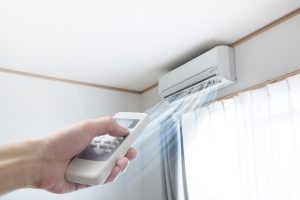For homeowners exploring options to efficiently heat and cool their spaces, ductless systems are an excellent alternative. A ductless mini split can serve as a primary cooling system or supplement existing cooling systems in your home. Ductless mini split systems are energy efficient and provide year-long comfort. This post delves into the benefits of ductless systems, explaining why they’re a smart solution for additions or rooms that aren’t adequately served by traditional HVAC setups. Keep reading to learn more about the advantages of ductless systems and how they can enhance your home’s comfort.

Introduction to Ductless Mini Splits
Ductless mini splits, often referred to as mini split systems or simply mini splits, are innovative heating and cooling solutions that don’t require traditional ductwork. Each system is made up of an outdoor unit connected to one or more indoor units via refrigerant lines, allowing for efficient transfer of heated or cooled air directly into the room or zone where it’s needed. This setup makes ductless mini splits an ideal choice for homes or businesses without existing ductwork, as well as for additions or spaces where extending ducts would be impractical or costly. By delivering both heating and cooling through advanced technology, ductless mini splits help save energy and reduce overall energy consumption, making them a smart, eco-friendly option for year-round comfort.
Types of Ductless Mini Split Systems
When it comes to ductless mini split systems, there are options to suit nearly any space or need. Single-zone mini split systems are perfect for heating and cooling one room or area, providing targeted comfort exactly where you want it. For larger homes or businesses, multi-zone ductless mini split systems allow you to connect multiple indoor units to a single outdoor unit, giving you independent temperature control in several rooms or zones. You can also choose from a variety of indoor unit styles, including wall-mounted, floor-mounted, and ceiling-mounted options, to best match your décor and space requirements. Many ductless mini split systems are equipped with heat pumps, offering both heating and cooling in one efficient package—ideal for maintaining comfort throughout the year, no matter the season.
The Flexibility of Ductless Systems
Ductless systems offer a high degree of flexibility compared to traditional central HVAC units. By installing compact indoor units in individual rooms, you gain precise temperature control in each zone—perfect for homes with unique layouts, finished basements, sunrooms, or new additions that lack ductwork.
This zoned approach ensures you only cool or heat the spaces you actually use, cutting wasted energy and delivering a truly customized comfort experience. And because each unit operates independently, it’s easy to expand your system later if you remodel or add more living space. Ductless systems can also be scaled to provide comfort for the entire house, not just individual rooms. Additionally, ductless mini-split systems can save energy and reduce consumption by up to 40% over conventional systems, making them an eco-friendly and cost-effective choice.
Energy Efficiency and Cost Savings
Operating on a zone‑by‑zone basis means ductless systems avoid the energy losses common in ducted systems (which can lose up to 30% of conditioned air through leaks and poor insulation). On average, homeowners can expect significant energy savings with ductless mini split systems, making them a cost-effective choice for efficient cooling. Inverter-driven compressors adjust output to meet demand rather than cycling on and off, boosting Seasonal Energy Efficiency Ratios 2 (SEER2) well beyond most central air systems.
Homeowners frequently report cutting heating and cooling costs by 30–50% compared to window units or baseboard heating. Over time, these savings can offset initial equipment costs—and reduce your carbon footprint.
Enhanced Comfort and Air Quality
Modern ductless units include multi-stage filtration systems that capture dust, pollen, pet dander, and other airborne particles. Many models offer humidity control, dehumidification, and even allergen‑reducing ionizers. By eliminating ductwork, you remove a common source of dust buildup and mold growth. The result is cleaner indoor air and more consistent temperatures—no hot or cold spots.
Indoor Unit Considerations
Selecting the right indoor unit for your ductless mini split system is essential for achieving optimal comfort and efficiency. Factors such as the size of the room, the level of insulation, and the direction and size of windows all play a role in determining which indoor unit will perform best. Proper sizing of the ductless mini-split system is critical to effectively cool the space and should be based on square footage and BTU needs. It’s important to ensure that the indoor unit is compatible with the outdoor unit and that the refrigerant lines are properly sized and installed for efficient operation. Indoor air quality is another key consideration—many ductless mini split systems come equipped with advanced air filters designed to capture dust, allergens, and other airborne particles, helping to create a healthier living environment. By choosing the right indoor unit and ensuring it’s properly installed, you can enjoy efficient, reliable heating and cooling tailored to your space.
Quiet Operation and User-Friendly Controls
Unlike traditional forced‑air systems, ductless indoor heads operate at sound levels as low as 19 decibels — quieter than a whisper. Digital controls and smartphone apps make scheduling, temperature adjustment, and energy‑use monitoring intuitive. Geofencing features can even automatically adjust settings when you leave or return home, maximizing comfort and savings without any manual effort.
Financial Incentives and Rebates
Many utility companies and government programs offer rebates for high‑efficiency ductless installations, often ranging from $300 to over $1,000 per indoor unit. These incentives can significantly reduce upfront costs and accelerate return on investment. Be sure to check local energy‑efficiency programs to take full advantage of available rebates and tax credits.
Ideal Applications and Use Cases
Ductless mini‑splits excel in a variety of scenarios:
- Room additions or converted attics/basements without ductwork
- Historic homes where installing ducts isn’t feasible
- Multi‑family dwellings for independent climate control
- Home offices, guest suites, and sunrooms that need targeted comfort
System Configuration and Installation
Proper system configuration and installation are crucial for getting the best performance and efficiency from your ductless mini split system. The outdoor unit should be placed in a location with good ventilation, away from direct sunlight and sources of moisture, to ensure reliable operation. Indoors, the unit should be installed where it can distribute air evenly throughout the room, avoiding obstructions that could block airflow. Refrigerant lines must be correctly sized and insulated to minimize energy loss and maintain system efficiency. Every ductless mini split system should be configured to meet the specific heating and cooling needs of the space it serves. To ensure everything is installed and set up correctly, it’s always best to work with a licensed HVAC professional who can tailor the system to your home or business and maximize its performance.
Role of HVAC Professional
A licensed HVAC professional is essential when it comes to installing, maintaining, and repairing ductless mini split systems. These experts can help you determine the right system size and configuration for your home or business, taking into account factors like square footage, insulation, and window placement to ensure efficient heating and cooling. Regular maintenance, such as cleaning or replacing air filters and inspecting refrigerant lines, is key to keeping your ductless mini split system running smoothly and efficiently. An HVAC professional can also quickly diagnose and repair any issues, helping you avoid costly breakdowns and extend the lifespan of your system. By relying on a qualified technician for installation and ongoing care, you can save energy, reduce costs, and enjoy reliable comfort year-round.
Maintenance, Reliability, and Longevity
Proper maintenance is essential for ensuring the reliability and longevity of ductless systems. Homeowners can expect a ductless mini split system to last 10 to 20 years with regular care and servicing. However, the average lifespan of a ductless mini-split system is typically between 10 to 15 years, depending on usage and maintenance.
Ductless systems require minimal routine maintenance—typically just monthly filter cleaning and bi-annual professional inspection. Without ducts to clean, there’s less risk of hidden mold or debris buildup. High‑quality ductless units often carry warranties of 10 years or more on compressors and parts, delivering reliable performance for well over a decade. However, systems may need to be replaced when they reach the end of their lifespan or experience frequent issues. Timely replacement can help avoid higher repair costs and maintain optimal energy efficiency.
All maintenance, repairs, and replacement should be performed by licensed technicians to ensure safety, proper functioning, and warranty coverage. Professional installation is essential for proper functioning and is often required for warranties to be valid, ensuring peace of mind and long-term reliability.
For expert ductless mini split help, contact Cool Care Heating and Air Conditioning – Offering the best care for your air!



